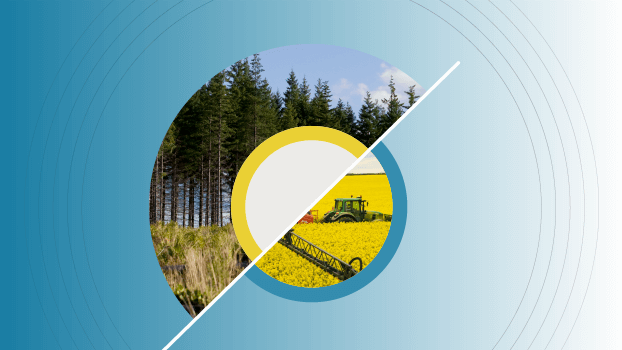Increasingly, investors are looking to understand not only how ESG issues affect portfolio performance, but also how their investments can contribute to positive environmental and social impact. This shift correlates to a greater appreciation of factors that accompany the explosive growth of ESG integration caused by societal changes and the expanding international support for initiatives, such as the UN Sustainable Development Goals (SDGs).
Sustainalytics provides a number of solutions to help investors measure, manage and report on the environmental and social impact of their investments.
Latest Insights
Why Impact Matters: Seven Essential Considerations for Investors
Post-COP15 Outlook: Evolving Investor Responsibilities in Biodiversity
Sustainalytics’ Impact Solutions
ESG Impact Framework
Sustainalytics’ ESG Impact Framework comprises six themes, which are aligned with the SDGs: Climate Action, Healthy Ecosystems, Resource Security, Basic Needs, Human Development and Leadership & Collaboration. This framework covers all the direct and indirect potential environmental and social impacts of an entity..
Impact Metrics
Impact Metrics is a broad set of company-level metrics that provide measures of environmental and social outcomes. Investors can use these metrics to analyze and report on the impact of their portfolios and alignment to the SDGs and ESG Impact Framework.
Thematic Engagement
A proactive collaborative engagement program that focuses on ESG topics aligned to the SDGs, such as Climate Change and Human Capital.
Impact Resource Center
Investors can use Impact data throughout the investment process to support robust impact-oriented strategies.

Integrate Biodiversity Risks and Opportunities with Nature Data
Integrate deeper nature-related insights when using the globally recognized Sustainable Development Goals (SDGs) and other impact themes to analyze and report on the environmental and social impact of your portfolio investments.
- Suitable for clients interested in SDG 13 (Climate), SDG 14 (life above land) and SDG 15 (life above water)
- Supplement the operational and SAI metrics with information on a company’s management systems
- Include Controversies and Product Involvement activities as important safeguards (screens)
Why Sustainalytics?
A Single Market Standard
Consistent approach to ESG assessments across the investment spectrum.
Award-Winning Research and Data
Firm recognized as Best ESG Research and Data Provider by Environmental Finance and Investment Week.
End-to-End ESG Solutions
ESG products and services that serve the entire investment value chain.
30 Years of ESG Expertise
800+ ESG research analysts across our global offices.
A Leading SPO Provider
As recognized by Environmental Finance and the Climate Bonds Initiative.
Related Insights and Resources
Why Impact Matters: Seven Essential Considerations for Investors
Today’s investors are facing increased scrutiny from stakeholders for greenwashing risk. ESG-related disclosure regulations are quickly advancing and more customers are seeking impact-focused products. This market environment demands heightened transparency and credibility, and investors need to know how Impact can help them rise to these challenges and meet their diverse sustainability goals.
Post-COP15 Outlook: Evolving Investor Responsibilities in Biodiversity
Awaiting COP15’s Global Biodiversity Framework negotiation outcomes, financial market participants could face new regulatory pressure sooner than expected to integrate biodiversity assessment into their investment, decision-making processes.
Danish Delegation Engages Sustainalytics’ Biodiversity Expert, Enabling Front Row Access to COP15 Negotiations
Finance Day within the U.N. Biodiversity Conference (COP15) is fast approaching, and Morningstar Sustainalytics’ team members will be in attendance, each focusing on different investor biodiversity considerations related to active ownership.
Leveraging Blockchain to Improve Supply Chain Management - A Case Study for Household and Personal Products Companies
With growing scrutiny from stakeholders—international regulators and regional governments, NGOs, the general public, investors, and financial institutions—companies accused of human rights violations and environmental damage in their supply chains face substantial risks.










